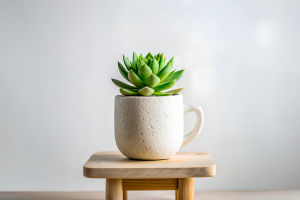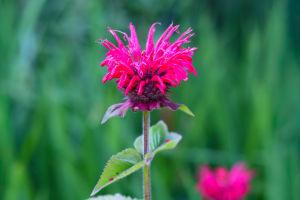The Natural Water Cleaners
We've all seen it—streams, rivers, and lakes tainted by pollution. Whether it's from industrial runoff, sewage, or chemicals, polluted water is a huge environmental issue. But what if nature itself had a solution?
Believe it or not, plants can play a key role in cleaning up polluted water. In fact, many aquatic plants have been used for centuries to filter and purify water naturally. The process is not only effective, but it's also sustainable and eco-friendly.
How Plants Clean Polluted Water
So how exactly do plants help clean water? It's all about their unique ability to absorb, filter, and transform harmful pollutants in the water. Here's how they do it:
1. Absorption of Pollutants: Aquatic plants like reeds, cattails, and water lilies have specialized root systems that absorb pollutants directly from the water. These roots can take in harmful chemicals, heavy metals, and nutrients like nitrogen and phosphorus, which are common pollutants in water bodies. By doing so, the plants prevent these toxins from spreading further into the ecosystem.
2. Root Filtration: The roots of many plants act as natural filters. As water flows through the plant's root zone, particles like sediments and organic matter are trapped by the root hairs. This process helps clear the water of contaminants and improves its clarity. In some cases, plants can even break down organic pollutants into less harmful substances, further purifying the water.
3. Nutrient Uptake: Excessive nutrients, particularly nitrogen and phosphorus from agricultural runoff, can cause water quality problems, like algal blooms. These blooms can choke the life out of aquatic ecosystems by depleting oxygen levels. Plants can absorb these excess nutrients, preventing the algae from proliferating and keeping the water healthy for other organisms.
Types of Plants That Help Clean Water
Some plants are particularly well-suited to purifying water. Here are a few common types used for this purpose:
1. Water Hyacinth: This floating aquatic plant is known for its fast-growing nature and ability to absorb pollutants from water. It thrives in nutrient-rich environments and is often used to treat wastewater in sewage treatment plants or urban ponds. Its roots dangle below the water's surface, collecting contaminants and improving water quality.
2. Cattails: Cattails are commonly found in wetlands and are excellent at filtering water. Their thick root systems help trap contaminants and reduce pollutants in the water, especially in marshy or stagnant environments.
3. Reeds: Reeds are another plant with deep root systems that help absorb and filter out heavy metals and toxins. They're often used in constructed wetlands or water treatment ponds where they act as natural filters for polluted water.
4. Water Lilies: Known for their beauty, water lilies also contribute to water purification. They help stabilize the water by preventing erosion and reducing evaporation. Their large leaves also provide surface area for microorganisms, which assist in breaking down pollutants in the water.
5. Duckweed: Though small in size, duckweed is one of the most efficient plants at absorbing nutrients like nitrogen and phosphorus. It floats on the surface of the water, absorbing excess nutrients and preventing algae blooms that can disrupt aquatic ecosystems.
Benefits Beyond Water Purification
Aside from their ability to purify water, aquatic plants offer a range of other ecological benefits. These plants help maintain the balance of local ecosystems by providing food and shelter for various species, including fish, insects, and birds. Additionally, they help prevent erosion by stabilizing the soil along riverbanks and shorelines.
1. Ecosystem Support: By creating dense plant mats, aquatic plants provide habitats for fish, amphibians, and other wildlife. They create an environment where organisms can find shelter and food, supporting biodiversity in the area.
2. Carbon Sequestration: Like all plants, water plants absorb carbon dioxide and contribute to carbon sequestration. This helps reduce the amount of greenhouse gases in the atmosphere and mitigates climate change.
3. Aesthetic and Recreational Value: Aquatic plants also enhance the beauty of waterways and lakes. Whether in private ponds, public parks, or restored wetlands, these plants add to the natural beauty and offer recreational opportunities like bird watching, fishing, and kayaking.
Challenges and Limitations of Using Plants to Clean Water
While the benefits of using plants to clean water are clear, there are some challenges to consider. Here are a few factors that can limit the effectiveness of this natural filtration process:
1. Slow Process: Plants naturally take time to absorb and filter pollutants. While they're effective over the long term, they may not provide an instant solution for highly polluted water bodies.
2. Overgrowth: Some plants, like water hyacinth, can grow so quickly that they become invasive. If left unchecked, they can block sunlight, deplete oxygen levels, and harm aquatic life. Managing plant growth is crucial to maintaining a balanced ecosystem.
3. Nutrient Imbalance: In cases where the water is extremely nutrient-rich (such as in agricultural areas), the plants may absorb so much that they can no longer keep up with the demand. This can result in a buildup of excess nutrients in the water, which may require additional management.
How You Can Help Improve Water Quality
There are many ways you can contribute to improving water quality through the use of plants:
1. Plant in Your Backyard: If you have a pond or garden, consider planting aquatic species like cattails, water lilies, or duckweed to naturally filter and improve water quality.
2. Support Wetland Restoration Projects: Many organizations focus on wetland restoration and aquatic plant management. By supporting these projects, you can help restore ecosystems and improve water quality in your local area.
3. Minimize Pollution: Reduce the use of harmful chemicals like pesticides and fertilizers that can eventually make their way into waterways. Opt for eco-friendly alternatives and practice sustainable gardening techniques.
Conclusion: A Green Solution for Cleaner Water
Plants are incredibly effective natural water cleaners, offering a sustainable and low-cost solution to polluted water. By absorbing pollutants, reducing excess nutrients, and providing habitat for wildlife, plants contribute to healthier ecosystems and cleaner waterways. While there are challenges in managing plant growth and ensuring their long-term effectiveness, the benefits far outweigh the drawbacks. Whether in urban water management systems, wetlands, or backyard ponds, incorporating plants into our water cleanup efforts is a powerful way to help protect our environment for future generations.


